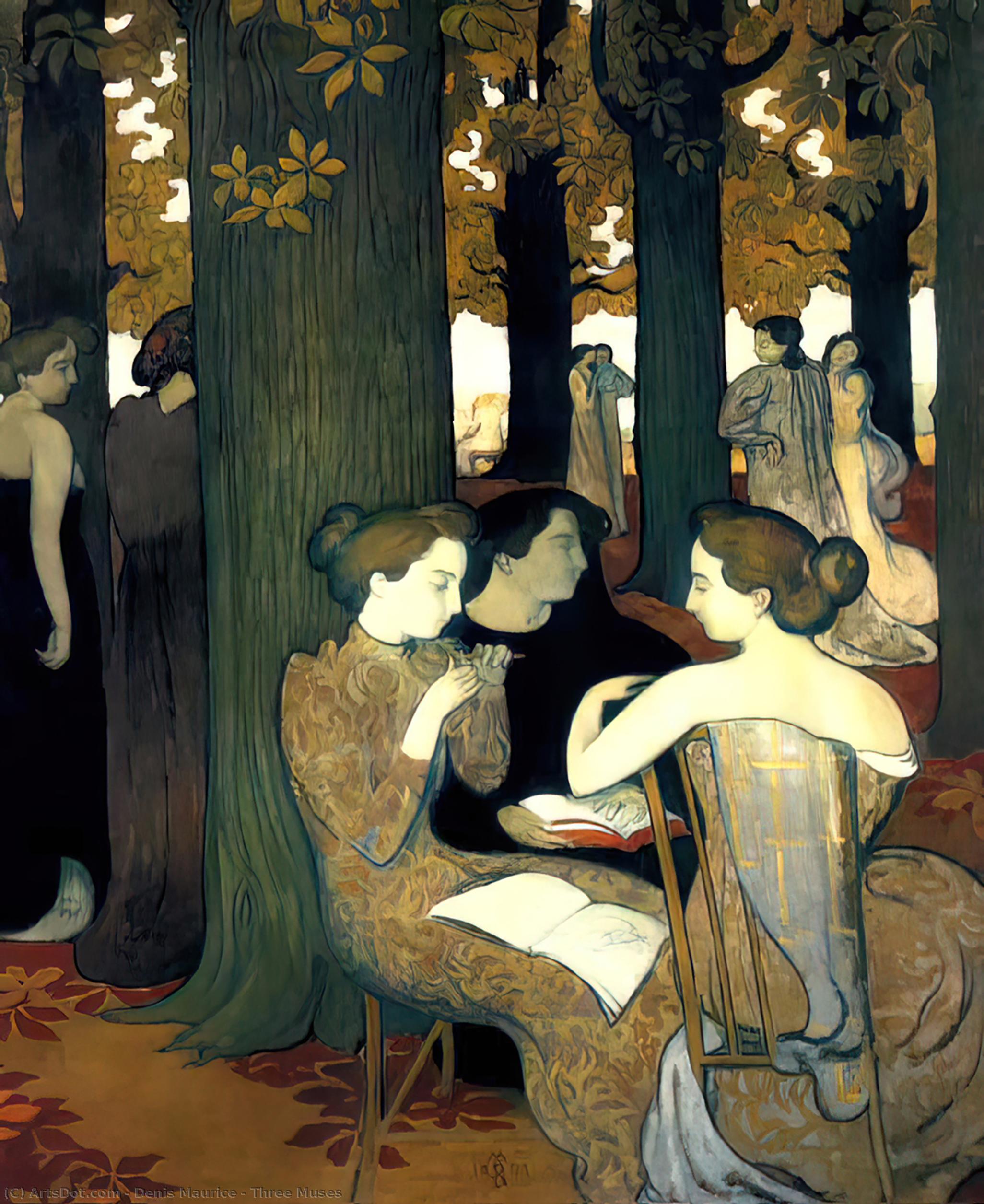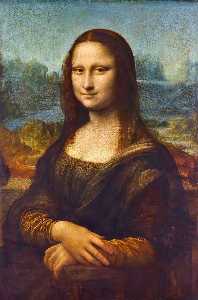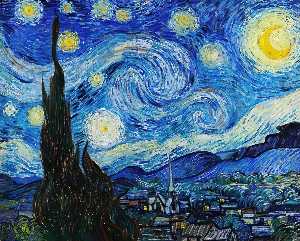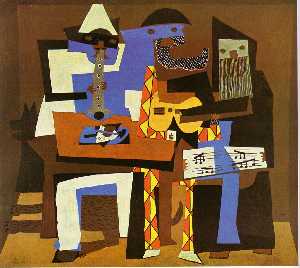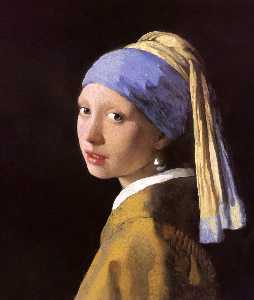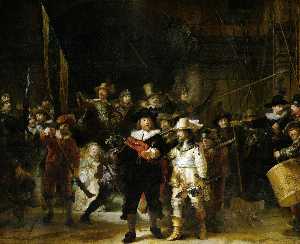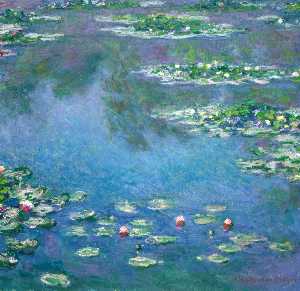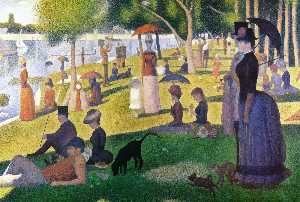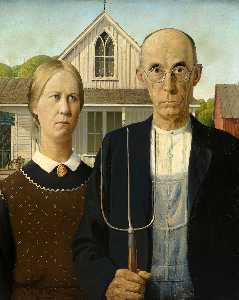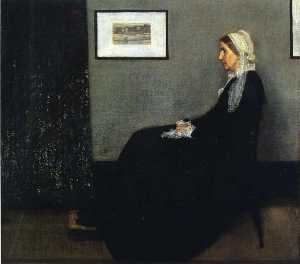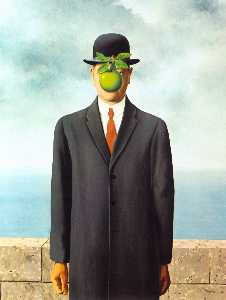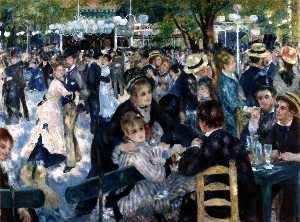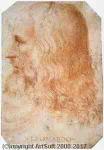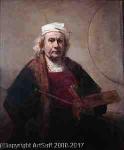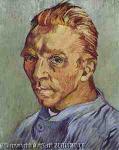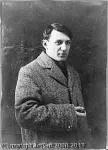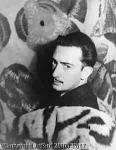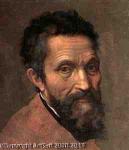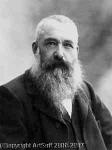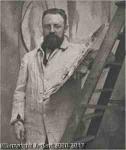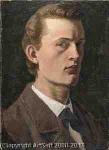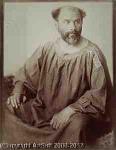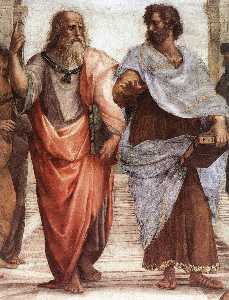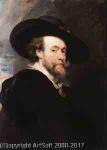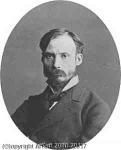عمل فني متميز
فنان: Denis Maurice
نمط: Post-Impressionism
المواضيع: Woman
تاريخ: 1893
متحف: Musée d'Orsay (Paris, France)
In the guise of women dressed in contemporary clothing, Maurice Denis updates a subject taken from classical mythology – the muses who inspire the arts and sciences. But he transforms the theme profoundly, stripping the muses of the traditional attributes which allow them to be identified. In the group of three women sitting in the foreground we can see the figure of Marthe, whom the painter married in June 1893 and who inspired his art until her death. In a device common in Denis' work, she is shown twice: in profile in red and from the back, sitting on the chair. Maurice Denis has set the scene on the terrace of Saint-Germain-en-Laye, the town where he lived all his life. The century-old chestnut trees give the composition rhythm and decorative power. The regular strokes of the tree trunks are a pretext for a play of vertical lines which contrast with the curves and ornamental arabesques of the branches, the leaves strewn on the ground, and the patterns and folds of the dresses. The graphic play of lines and interlacing is intensified by the unreal, autumnal colours, painted in areas of flat colour and neatly outlined. The flattened space is that of a "sacred wood", the setting for a revelation and the figures' mysterious communication with nature and supernatural powers. An enigmatic tenth muse in the background (while traditionally there are only nine), with one arm raised to the light of the sky, convinces us of that.
